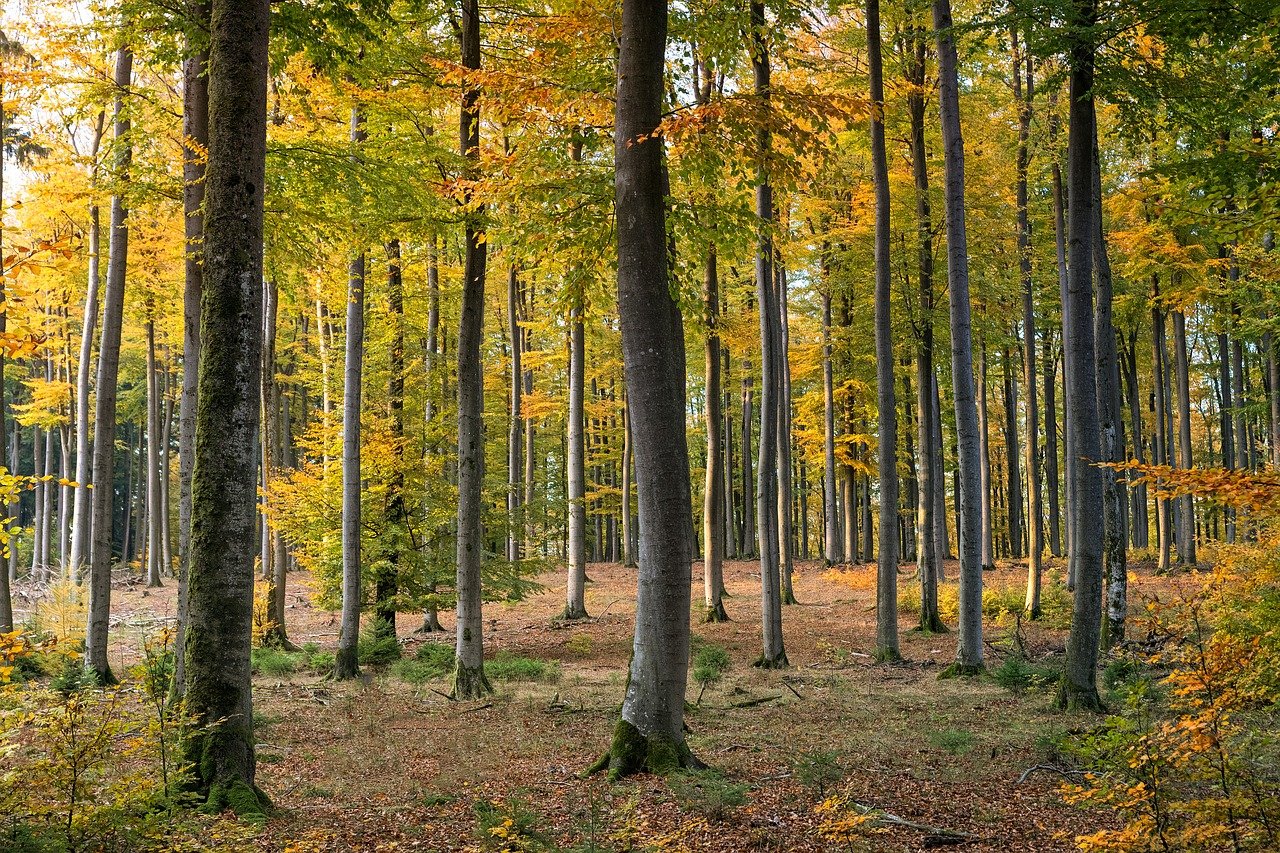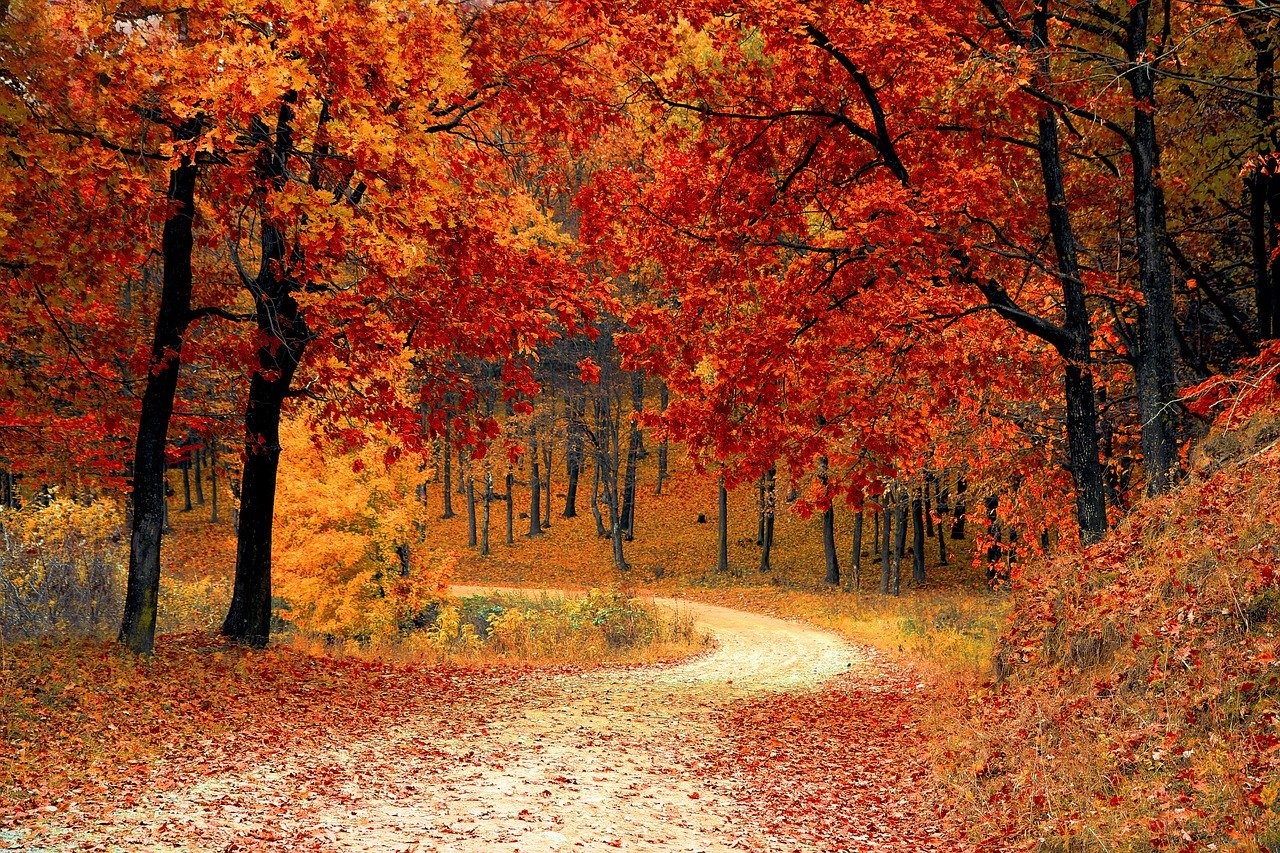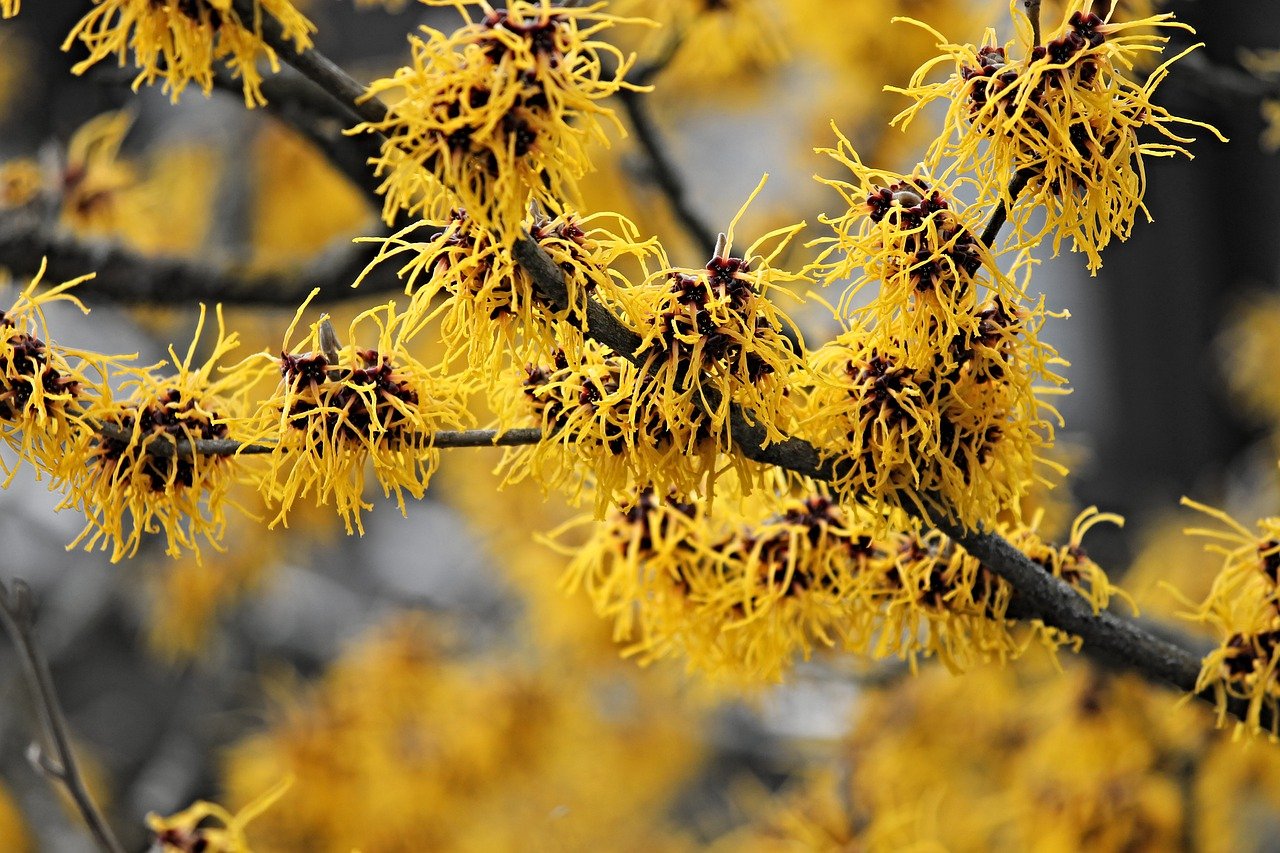
Interesting Plants Found in Temperate Deciduous Forests
There are some incredibly interesting plants found in temperate deciduous forests. Historically, these forests covered a vast expanse across the northern hemisphere, including the eastern parts of North America, Europe, and a huge swath of Asia.
Although the amount of temperate deciduous forests is reducing due to human activity, their presence is still apparent across the globe.
Temperate deciduous forests and the plants they contain are very well-known and well-studied, but we’re still learning new things about them every day.
Some of the most common ornamental trees stem from these forests, as well as popular wildflowers, food plants, and more. What kind of plants grow in temperate deciduous forests? Some pretty interesting ones, to say the least!

Image by jplenio
What Is a Temperate Deciduous Forest?
First, let’s define temperate. Temperate ecosystems are distinct from tropical and arctic ecosystems, which fall on either side of temperate regions.
Typically, temperate regions have milder weather than the arctic and tropics (although temperatures can still be extreme at times). In addition, temperate regions usually experience some amount of seasonality, with four distinct seasons that pass through the year.
Deciduous trees – trees which lose their leaves annually – dominate deciduous forests, hence the name! Most, if not all of the trees lose their leaves in the fall.
This is very unlike evergreen forests, where most of the trees retain their leaves year-round. Enough with the definitions though, let’s talk about the most interesting plants found in temperate deciduous forests!

Image by Valiphotos
Trees That Transform
We can’t talk about interesting plants in this forest type without giving a shoutout to the trees that define it. Come fall, deciduous trees lose all of their leaves in spectacular fashion, painting the hills with yellow, orange, and red.
The dropping of leaves is one of the most beautiful transformations in the natural world, and it’s so grandiose it can be seen from space! Some common trees in temperate deciduous forests include oak, beech, birch, elm, maple, and more.
Trees drop their leaves in the fall in order to become dormant through winter. Because the sun is weak and the temperatures are low, there is little potential for photosynthesis. So, trees hunker down and store essential water and nutrients which could otherwise be lost through their leaves in cold, harsh weather.
The Story of the American Chestnut
One interesting tree, in particular, is the American chestnut (Castanea dentata), a tree that was once an important part of many forests in the Eastern US and Canada. That is, until a fungal disease was introduced from East Asia and wiped out billions of American chestnuts in the early 1900s.
Today, the American chestnut is critically endangered. Only a hundred years ago, it stood tall as one of the largest trees in the temperate deciduous forests of North America.

Leaves of a dawn redwood tree. Image by leoleobobeo
A Living Fossil
In 1939, a Japanese botanist named Shigeru Miki found a fossil of a tree and named it Metasequoia due to its resemblance to living sequoia trees. Then, in the 1940s, Chinese botanists discovered a peculiar stand of trees whose leaves matched exactly the fossil previously discovered by Shigeru Miki.
As it turns out, the living trees were indeed the exact same species! Thus, the Chinese botanist discovered a living fossil and named it Metasequoia glyptostroboides, commonly known as the dawn redwood. This discovery is regarded as one of the most important botanical discoveries of the 20th century.
Although dawn redwoods are a type of gymnosperm, they are among the few conifers that drop their needles during winter. They are also only found in valleys in a small region of China, making dawn redwood forests truly unique.
Their peculiar deciduous nature and ancient history make dawn redwoods one of the most interesting plants found in temperate deciduous forests!

Witch hazel flowers. Image by manfredrichter
Winter Blooms
In many temperate deciduous forests, winter is characterized by little to no plant growth. In many forests, winter snow suppresses any chance for plants to grow. However, there are a few plants that love the cold weather and thrive during winter.
Witch hazel (Hamamelis virginiana) is one such type of winter plant. Originally native to the deciduous forests of the Eastern US and Canada, they are now incredibly common in the horticultural trade around the world.
Part of their allure is due to the fact that witch hazel flowers during fall, right before the harshest weather of the year. Their yellow-orange flowers contrast wonderfully against early winter snows.

Image by StillWorksImagery
Lady Slipper Orchids
Lady slipper orchids (Cypripedium spp.) are one of the most beloved herbs in temperate deciduous forests. The genus comprises 58 different species of orchids and has an incredibly wide range. It’s native to temperate North America, Europe, and Asia. It’s one of the most charismatic plants in the forest understory, and for good reason.
The adorable flower only has a few leaves that grow right out of the ground. When it flowers, the characteristic slipper-shaped blooms are hard to mistake. Because of their striking beauty, lady slipper orchids have become popular to grow in homes and gardens.

Image by Will Brown
A Peculiar Parasite
Many plants are parasites, and one of the most famous is the ghost pipe (Monotropa uniflora). This plant grows entirely underground, and it sends up a ghostly white stem when it flowers.
These ephemeral flowers get all of their energy from underground mycorrhizal fungi and send up a single bloom each after a good rainfall.
Although ghost pipes can be found in all types of temperate forests, they are important parts of deciduous forests. The species grows all across temperate North America and Asia, a bizarre range considering how distant the two continents are.
There are all kinds of interesting plants in temperate deciduous forests, and we haven’t exhausted all of the cool plants found in these ecosystems. What are your favorite plants found in temperate deciduous forests? Let us know in the comments below!
—–
Like what you read? Subscribe to our newsletter for engaging articles, exclusive content, and the latest updates.
Check us out on EarthSnap, a free app brought to you by Eric Ralls and Earth.com.
—–












